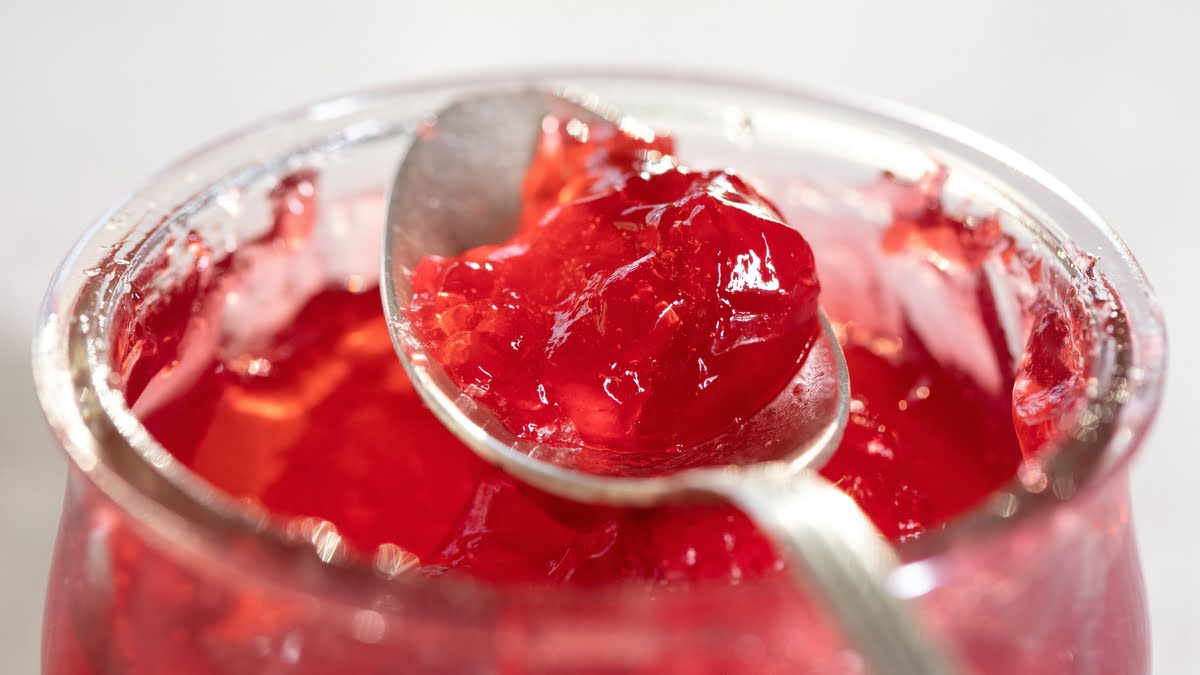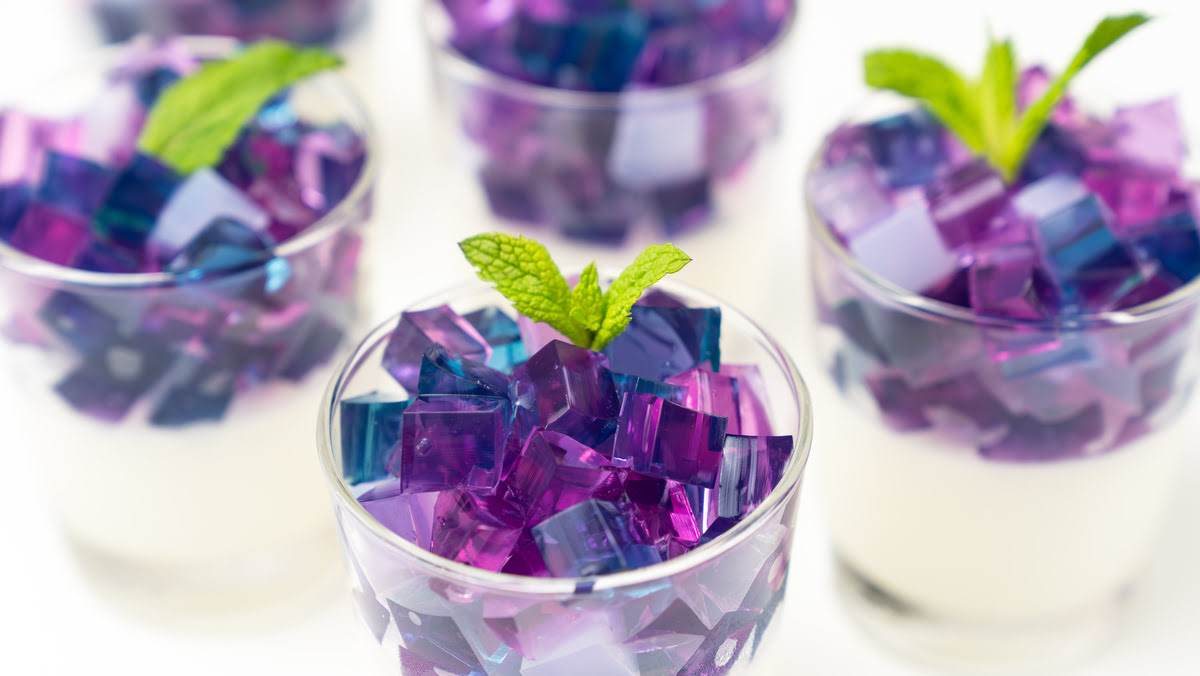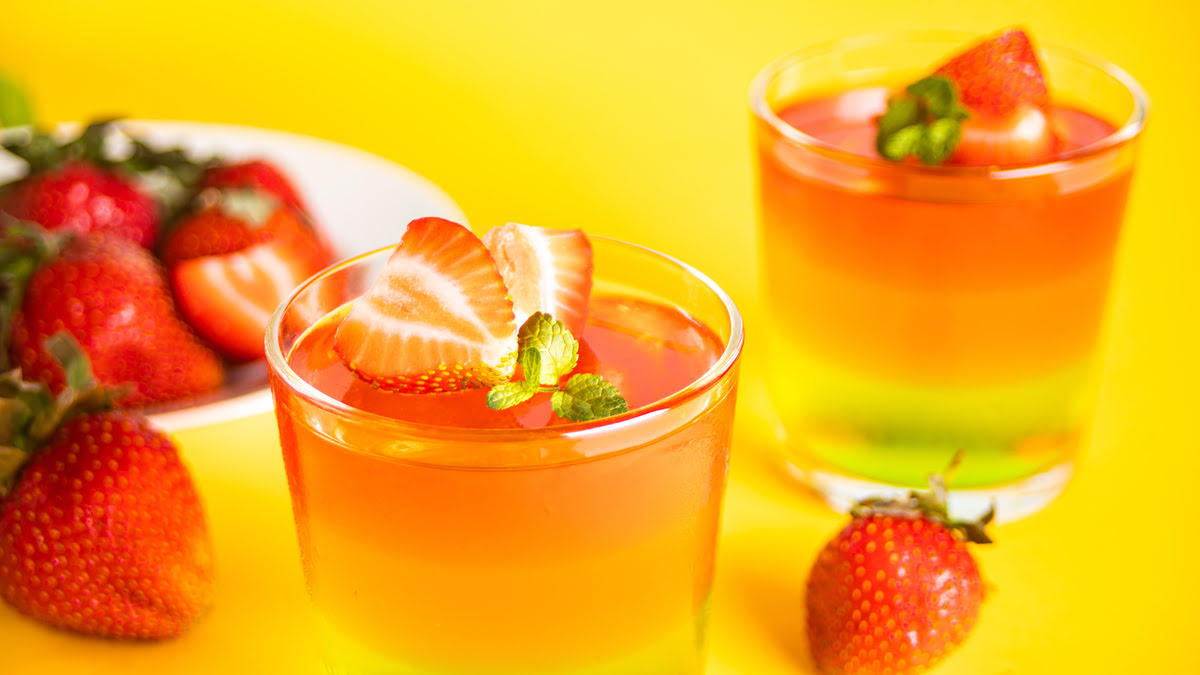Sweets under the microscope: is jelly healthy?
Colorful, light, and extremely popular – jelly has been a staple in home menus for years as a dessert enjoyed by both children and adults. Although many consider it an innocent treat, the question increasingly arises: is jelly healthy? Or is it just an apparently light dessert hiding artificial additives and large amounts of sugar?
Is jelly healthy?
Although jelly is seen as a light and pleasant-tasting sweet, it’s worth taking a closer look before making it a regular part of your daily diet. Its popularity comes not only from its attractive appearance or variety of flavors but also from the belief that it’s a healthier alternative to more processed sweets. But is jelly really healthy?
It all depends on the ingredients. Traditional jellies available in stores often contain large amounts of sugar, artificial colorings, and flavorings, which reduce their nutritional value. Such products mainly provide so-called empty calories—energy without essential nutrients that support the body. From a healthy eating perspective, they are therefore not the best choice, especially for people watching their figure or blood sugar levels.
On the other hand, healthy jelly, prepared at home, can look completely different. Versions based on natural fruit juices, without added sugar or with plant-based sweeteners, are becoming increasingly popular. Moreover, the use of gelatin can enrich the dessert with valuable collagen, which supports the condition of skin, hair, and joints. It’s also worth remembering that jelly can be a valuable addition to the diet—as long as we consume it in moderation and choose versions without unnecessary additives.

To sum up, is fruit jelly healthy? Yes – provided it’s prepared with care for ingredients and quality. In the right form, it can be a light, refreshing dessert that not only satisfies the craving for something sweet but also fits the principles of balanced nutrition.
What is jelly made of?
The characteristic jelly consistency—springy and slightly wobbly—is primarily due to one ingredient: gelatin. It’s responsible for the gelling process that transforms liquid into an elastic dessert.
Gelatin in jelly
Edible gelatin is an animal-derived product obtained through the long process of cooking collagen-rich raw materials—mainly the skin, bones, and cartilage of cattle or pigs. During heat treatment, collagen is released and converted into gelatin, which, when cooled, forms a jelly-like structure. As a result, gelatin jelly may contain trace amounts of natural collagen, which attracts interest among people concerned about skin and joint health.
Answering the question: does fruit jelly contain collagen? – in versions based on traditional gelatin – yes, although the amount depends on the dose used.
Other jelly ingredients
In addition to the base gelling ingredient, jellies usually contain sugar or its substitutes, flavorings (often fruit-based), and colorings, which can be of both natural and synthetic origin. Acidity regulators such as citric acid are also commonly used to enhance flavor and extend shelf life.
It’s worth noting that in response to the growing needs of vegetarians and vegans, alternatives based on agar—a plant-based gelling agent derived from algae—have been developed. Thanks to this, it’s possible to prepare healthy jelly without animal ingredients, making it even more versatile.
Jelly and its properties
In recent years, more and more has been said about the potential health benefits of consuming jelly, particularly regarding the properties of its main ingredient—gelatin. Many myths have arisen around this topic, so it’s worth looking at the facts.
Jelly properties come from the presence of gelatin, which is a form of processed collagen. This natural protein compound is considered a safe dietary ingredient that, in moderate amounts, may have a positive effect on the body.
Thanks to the presence of amino acids such as glycine and proline, gelatin may support the proper functioning of joints, skin, and hair. These compounds play a key role in regenerating and maintaining the elasticity of connective tissue, including cartilage.
Although jelly won’t replace collagen supplements or high-protein foods, it can be a tasty complement—especially for those looking for healthier alternatives to processed sweets.
Sugar content in jelly
One of the most often overlooked aspects when choosing jelly is its composition, especially the amount of sugar it contains.

Although jelly is considered a light dessert, in reality many ready-made products available on the market contain significant amounts of sucrose. It’s this sugar that’s responsible for the intense sweetness we associate with this treat. But is jelly healthy when it contains several teaspoons of sugar per serving? For people reducing calories, maintaining their figure, or controlling blood glucose levels – the answer can be ambiguous.
Effects of excessive sugar consumption
Excessive sugar intake is linked to numerous health problems—from overweight and obesity to an increased risk of type 2 diabetes, cardiovascular diseases, and tooth decay. That’s why it’s so important to consciously read labels and choose products that don’t add unnecessary calories. This also applies to desserts such as jelly, which often appears in children’s diets.
A healthier alternative to store-bought jelly
An alternative can be homemade jelly prepared independently – from natural fruit juices, without added white sugar. Instead, you can use stevia, erythritol, xylitol, or agave syrup, which don’t significantly affect blood sugar levels. Thanks to this, even people on a diet can enjoy a sweet taste without guilt.
The homemade version has another advantage – it eliminates artificial flavorings and colorings often found in commercial products. As a result, such jelly becomes not only healthier but also a more natural choice for those looking for a wholesome dessert with a simple ingredient list.
Homemade gelatin jelly
If we care about full control over ingredients, homemade gelatin jelly is the best solution. Unlike store-bought versions, this one contains no unnecessary additives, preservatives, or excess sugar. It’s an ideal choice for health-conscious individuals and a great option for including jelly in your diet as a light and refreshing dessert.
How to make gelatin jelly?
Ingredients:
- about 3 teaspoons of gelatin (per 500 ml of liquid),
- fresh or frozen fruit (e.g., strawberries, raspberries),
- natural sweetener (erythritol, xylitol, or stevia – depending on preference),
- water.
Preparation:
- Pour a few tablespoons of cold water over the gelatin and leave it for a few minutes to swell.
- Blend the fruit into a smooth purée using a blender.
- Combine part of the purée in a saucepan with water and the chosen sweetener. Heat over low heat without bringing it to a boil.
- Add the swollen gelatin and the rest of the purée to the warm mixture. Stir until the gelatin is completely dissolved.
- Pour the ready mixture into molds or glasses.
- After cooling to room temperature, place the jelly in the fridge for at least 2–3 hours until it reaches the desired consistency.
In this way, you get healthy jelly that can be enriched with additional toppings—fruit slices, fresh mint, or natural yogurt. It’s a simple and quick dessert that not only tastes great but also fits perfectly into a conscious eating routine.
What fruits go with jelly?
One of the biggest advantages of jelly is its versatility – just a few fresh additions can give this simple dessert a completely new character. Choosing the right fruits not only enhances the flavor but also increases nutritional value. Thanks to them, gelatin jelly becomes not only appetizing but also more beneficial to health.
The vast majority of fruits pair perfectly with jelly, both in taste and texture. Juicy and colorful additions make the dessert look impressive – perfect for parties, summer gatherings, or as a light everyday treat. Importantly, it’s best to use seasonal fruits, which have the most flavor, aroma, and nutrients during their natural ripening period.
The most commonly chosen fruits for jelly include:
strawberries, raspberries, blueberries, bilberries, wild strawberries, apples, pears, grapes, bananas, peaches, and mandarins.
Each brings something unique—sweetness, tanginess, crunchiness, or delicacy. It’s also worth remembering less obvious options, such as rhubarb, which, although classified as a vegetable, works perfectly in refreshing summer desserts.
Which fruits should not be added to jelly?
Although jelly pairs well with many additions, there are a few exceptions that can completely ruin its consistency. Some fruits, though visually appealing and full of exotic aroma, can prevent gelatin jelly from setting.
These fruits include primarily:
kiwi, pineapple, mango, and papaya.
They contain natural proteolytic enzymes—such as bromelain (in pineapple) or actinidin (in kiwi)—which break down protein molecules, including gelatin, preventing it from gelling properly. As a result, even when using the right proportions, the dessert may remain liquid.

Nevertheless, you don’t have to completely give up these fruits. Simply briefly heat them, e.g., by boiling or baking. High temperature deactivates the enzymes, making it possible to combine them with jelly without any issues. It’s an easy way to enjoy exotic flavors without the risk of a failed dessert.
Jelly in your diet
Jelly can be more than just a colorful dessert – when prepared properly, it has the potential to become part of a healthy, balanced diet. The key lies in consciously choosing ingredients. Instead of buying ready-made products high in sugar and artificial additives, it’s worth preparing gelatin jelly in your own kitchen. Combined with natural juices, fresh fruit, and without refined sugar, it becomes a wholesome yet light snack.
Depending on the ingredients, jelly can provide collagen, support hydration, and serve as a low-calorie dessert—particularly valued by people on a diet. Its culinary versatility allows for creating diverse flavor compositions while enjoying its texture and freshness without guilt.
Is jelly healthy? Yes – provided we know what’s inside. Avoiding fruits that disrupt gelling, using natural sweeteners, and choosing seasonal additions make even a simple dessert take on a whole new quality. That’s why it’s worth experimenting in the kitchen and consciously including jelly in your diet—not only for its taste but also for the benefits it can bring to your body.


